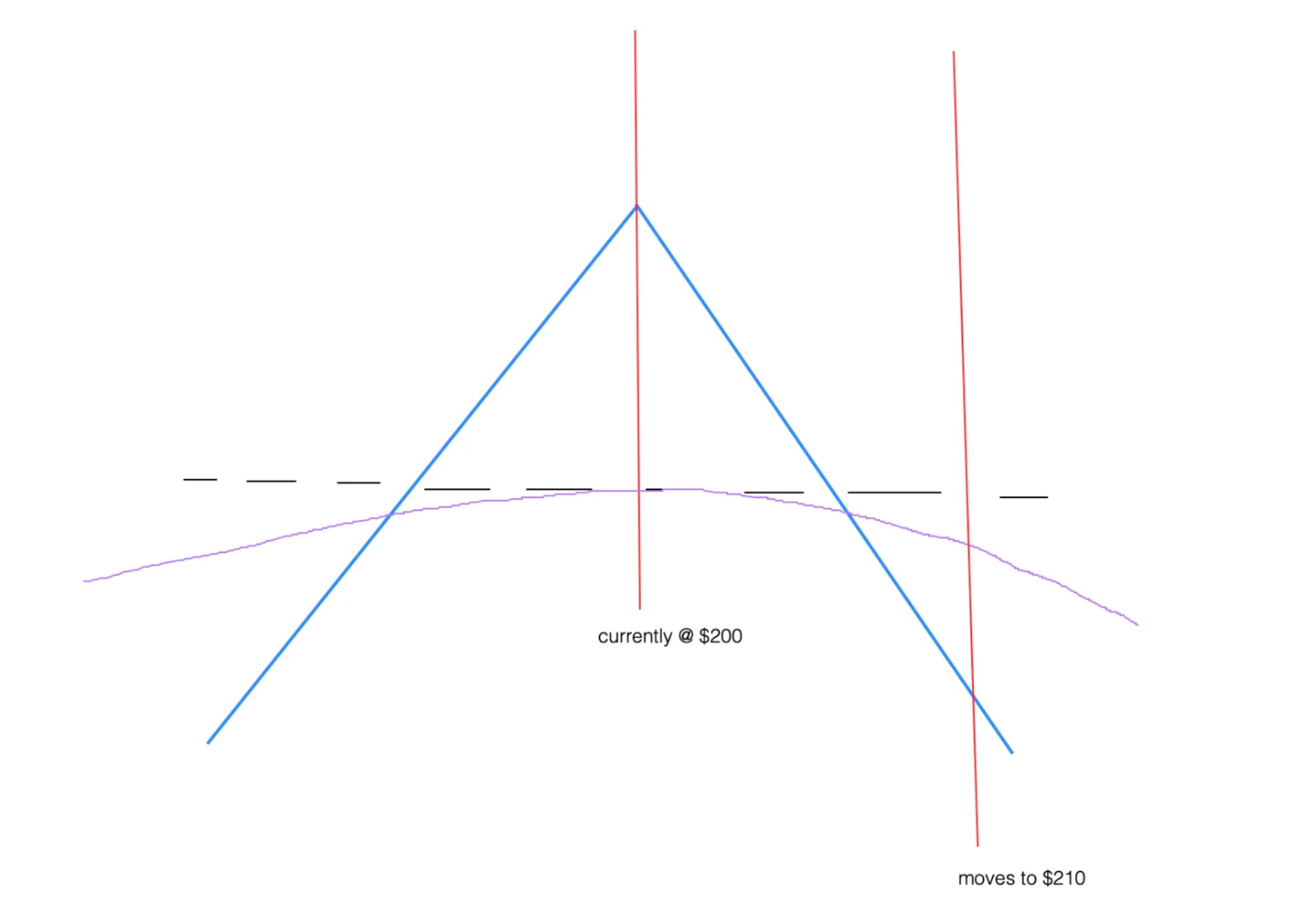

Finance
When Did Mergers And Acquisitions Start
Published: February 24, 2024
Discover the history of mergers and acquisitions in the finance industry, including when they first began and how they have evolved over time. Explore the origins and impact of M&A in finance.
(Many of the links in this article redirect to a specific reviewed product. Your purchase of these products through affiliate links helps to generate commission for LiveWell, at no extra cost. Learn more)
Table of Contents
Introduction
Exploring the Origins of Mergers and Acquisitions
Welcome to the fascinating world of mergers and acquisitions (M&A), a dynamic field that has significantly shaped the business landscape for centuries. The history of M&A is rich with intriguing developments, marked by pivotal moments that have reshaped industries and economies. By delving into the origins and evolution of M&A, we gain valuable insights into the forces driving corporate strategies and the intricate interplay of finance, innovation, and competition.
Throughout history, M&A activities have been instrumental in driving growth, fostering innovation, and restructuring businesses to adapt to changing market dynamics. From the earliest recorded transactions to the modern-day mega-mergers that capture global attention, the realm of M&A continues to exert a profound influence on the corporate world.
In this exploration, we will embark on a journey through time, tracing the roots of M&A, examining its evolution, and shedding light on the modern trends that define this captivating domain. Join us as we unravel the captivating story of mergers and acquisitions, from its humble beginnings to its current status as a cornerstone of corporate strategy and finance.
Early History of Mergers and Acquisitions
The origins of mergers and acquisitions can be traced back to ancient civilizations, where trade and commerce formed the bedrock of economic activity. In ancient Greece and Rome, mergers were often driven by the need to consolidate resources and strengthen market positions. The concept of combining businesses to achieve mutual benefits laid the groundwork for early forms of M&A.
During the Middle Ages, guilds and trade associations emerged as prominent forces in the economic landscape, fostering collaboration and partnerships among artisans and merchants. These alliances, akin to modern-day strategic mergers, enabled participants to leverage collective resources and expertise for mutual gain.
The dawn of the industrial revolution in the 18th and 19th centuries brought about a surge in corporate consolidations and acquisitions, as burgeoning industries sought to capitalize on economies of scale and expand their market reach. Notable examples include the formation of large railroad and steel conglomerates, driven by the vision of industrial titans such as Andrew Carnegie and John D. Rockefeller.
One of the earliest recorded mergers in the United States dates back to 1892, when the Edison General Electric Company merged with the Thomson-Houston Company to form General Electric. This landmark transaction set the stage for a new era of corporate combinations, marking the beginning of a trend that would shape the future of business.
As the global economy continued to evolve, the early 20th century witnessed a wave of mergers and acquisitions across diverse sectors, driven by factors such as technological advancements, market expansion, and strategic realignment. These developments laid the groundwork for the modern M&A landscape, setting the stage for the transformative transactions that would unfold in the decades to come.
Mergers and Acquisitions in the 20th Century
The 20th century marked a pivotal era in the evolution of mergers and acquisitions, characterized by a surge in corporate consolidations, transformative deals, and regulatory developments that shaped the M&A landscape. Following the aftermath of World War I, the 1920s witnessed a flurry of mergers across various industries, driven by the pursuit of efficiency, market dominance, and strategic expansion.
One of the most iconic mergers of the early 20th century was the creation of the Radio Corporation of America (RCA) in 1919, which brought together leading radio technology companies to form a powerhouse in the burgeoning electronics industry. This groundbreaking merger set the stage for future industry-shaping transactions and exemplified the strategic imperatives driving corporate combinations.
The Great Depression of the 1930s led to a period of economic upheaval, prompting a slowdown in M&A activity as businesses grappled with financial challenges. However, the post-World War II era witnessed a resurgence in mergers and acquisitions, fueled by economic recovery, technological innovation, and the pursuit of global expansion.
The 1960s and 1970s, often referred to as the “merger mania” era, saw a dramatic escalation in M&A activity, characterized by a wave of conglomerate mergers, hostile takeovers, and strategic alliances. Notable transactions during this period include the formation of conglomerates such as ITT Corporation and the high-profile acquisition of Paramount Pictures by Gulf+Western Industries.
As the century progressed, regulatory reforms and antitrust measures aimed at curbing monopolistic practices and ensuring fair competition played a pivotal role in shaping the M&A landscape. Landmark legislation such as the Sherman Antitrust Act and the establishment of regulatory bodies like the Securities and Exchange Commission (SEC) and the Federal Trade Commission (FTC) introduced a new regulatory framework for overseeing M&A transactions, influencing deal dynamics and corporate strategies.
The latter part of the 20th century witnessed the emergence of leveraged buyouts (LBOs) and mega-mergers that reshaped entire industries, exemplified by the historic merger of Exxon and Mobil in 1999, creating the world’s largest publicly traded oil company at the time. These transformative transactions underscored the evolving dynamics of M&A, reflecting the interplay of economic, regulatory, and strategic forces that continue to define the field today.
Modern Trends in Mergers and Acquisitions
The 21st century has ushered in a new era of M&A characterized by evolving trends, technological advancements, and shifting global dynamics. In today’s interconnected and rapidly changing business environment, several key trends have emerged, shaping the landscape of mergers and acquisitions.
- Strategic Alliances and Joint Ventures: In an era defined by globalization and digital connectivity, companies increasingly seek strategic alliances and joint ventures as a means to access new markets, leverage complementary strengths, and drive innovation. Collaborative partnerships enable firms to navigate complex regulatory environments, share risks, and capitalize on emerging opportunities.
- Technology-Driven M&A: The pervasive influence of technology has redefined M&A strategies, with a growing emphasis on acquiring tech startups, intellectual property, and digital capabilities. As industries undergo digital transformation, technology-driven acquisitions play a pivotal role in enhancing competitiveness, expanding service offerings, and securing future growth prospects.
- Focus on ESG and Sustainability: Environmental, Social, and Governance (ESG) considerations have become integral to M&A decision-making, reflecting a broader shift towards sustainable and responsible business practices. Companies prioritize ESG factors in evaluating potential targets, aligning with investor expectations, and mitigating risks associated with environmental and social impact.
- Cross-Border M&A: Globalization has fueled a rise in cross-border M&A activity, as companies seek to access new markets, diversify revenue streams, and capitalize on international synergies. Cross-border transactions present opportunities for firms to expand their global footprint, gain access to specialized talent, and navigate geopolitical complexities.
- Regulatory Scrutiny and Antitrust Considerations: Heightened regulatory scrutiny and antitrust considerations play a significant role in shaping M&A strategies, particularly in the context of mega-mergers and acquisitions involving industry incumbents. Companies navigate complex regulatory landscapes, assess competitive implications, and engage in proactive dialogue with regulatory authorities to secure approvals.
Moreover, the rise of special purpose acquisition companies (SPACs), the influence of private equity in M&A markets, and the growing emphasis on post-merger integration and cultural alignment underscore the multifaceted nature of modern M&A dynamics. As the business landscape continues to evolve, these trends underscore the imperative for adaptability, strategic foresight, and a nuanced understanding of the intricate forces shaping the realm of mergers and acquisitions.
Conclusion
The history of mergers and acquisitions is a testament to the enduring forces of innovation, competition, and strategic evolution that have shaped the corporate landscape over centuries. From the early alliances of ancient civilizations to the transformative mega-deals of the modern era, M&A has been a driving force behind industry consolidation, market expansion, and strategic realignment.
As we reflect on the historical trajectory of M&A, it becomes evident that the field has continuously adapted to economic, technological, and regulatory dynamics, catalyzing pivotal shifts in business structures and market dynamics. The ebb and flow of M&A activity have mirrored the broader currents of economic growth, geopolitical shifts, and technological revolutions, underscoring the intricate interplay of global forces that influence corporate strategies.
Looking ahead, the future of mergers and acquisitions is poised to be shaped by emerging trends such as digital transformation, sustainability imperatives, and the evolving dynamics of global commerce. Companies navigating the M&A landscape must embrace agility, foresight, and a keen understanding of the multifaceted factors that drive successful transactions in an increasingly interconnected world.
As M&A continues to evolve, it remains a compelling domain that encapsulates the complexities and opportunities inherent in the ever-changing business environment. The lessons gleaned from the historical tapestry of mergers and acquisitions serve as a guiding compass for businesses seeking to navigate the intricate terrain of strategic partnerships, transformative transactions, and sustainable growth in the dynamic global marketplace.
Ultimately, the story of mergers and acquisitions is a narrative of resilience, adaptation, and strategic ingenuity—a testament to the enduring pursuit of growth, innovation, and value creation that defines the essence of corporate evolution.














